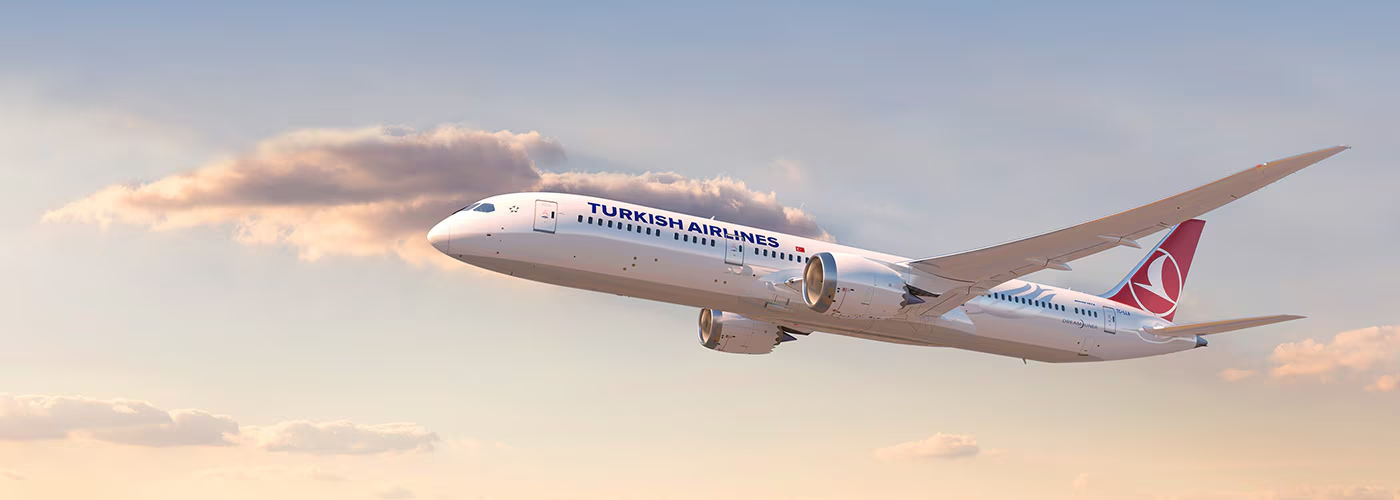How Fast Can Commercial Airplanes Fly?
Air travel remains the safest and fastest mode of commercial passenger and cargo transport, making it the preferred choice for over four billion people traveling around the world annually. The design of passenger planes has evolved significantly, becoming safer, faster, and more fuel-efficient. The speed of an aircraft critically affects travel time, fuel efficiency, and overall flight performance. So, how fast can commercial airplanes fly? Let’s figure it out!
Average Speeds of Commercial Airplanes

Frequent flyers may notice that the duration of flights on the same route can vary. This variation can be due to weather conditions and the specific flight path taken, but the cruising speeds of different aircraft also play a role. Various commercial aircraft types, from the DHC Dash 8-Q400 turboprop to the Airbus A380 superjumbo, each have different cruising speeds and typically travel faster at higher altitudes. On average, passenger planes cruise at speeds between 500 to 521 knots (575-600 mph), roughly Mach 0.78 to 0.81. Private jets, on the other hand, travel at speeds ranging from 435 to 521 knots (500-600 mph), approximately Mach 0.68 to 0.81.
Types of Speed Measurements in Aviation

The speed of an aircraft is measured differently from that of a ground vehicle due to the vast distances covered and the varying forces acting on it. There are two main types of aircraft speeds: ground speed and airspeed.
- Ground Speed: This is the time taken by the aircraft to cover a certain distance over the ground. At around 35,000 feet, a passenger plane can have an average ground speed of 300–600 knots. While commercial aircraft may cruise at similar airspeeds, headwinds and tailwinds can affect the speed at which they pass over the ground.
- Airspeed: This is the speed of the aircraft relative to the air around it and is the preferred measurement in aviation. Indicated Airspeed (IAS) and True Airspeed (TAS) are the most common conventions for determining airspeed. IAS is the speed shown on the airspeed indicator, uncorrected for instrument errors and atmospheric conditions. TAS, however, is the actual speed of the aircraft relative to the atmosphere, independent of instrument errors and other conditions. TAS is therefore used in most aircraft descriptions and manuals.
Fastest Commercial Planes in Service Today

When aircraft fly at altitudes between 25,000 to 30,000 feet, their speeds are referenced as a percentage of the speed of sound (Mach). The speed of sound (Mach 1) is about 761 mph at sea level and an air temperature of 59 °F (15 °C). Here are some of the fastest commercial aircraft currently in service:
- Airbus A350-1000: Known for its fuel efficiency, the Airbus A350-1000 is also one of the fastest, with a top speed of nearly 683 mph (Mach 0.89). It first flew in 2017 and entered commercial service in 2018. Over 85 active A350-1000s are in service with about seven carriers, and an additional 299 have been ordered by 15 airlines.
- Boeing 747-8i: This aircraft can reach speeds of 660 mph (Mach 0.86). It is the longest-range version of the 747 family, though it is no longer in production and is only operated by a few carriers.
- Boeing 787 Dreamliner: The Dreamliner family, with its various variants, can fly faster than most passenger aircraft on the market today. It is capable of speeds up to 690 mph (Mach 0.9) and is operated by over 39 different carriers.
The Fastest-Ever Passenger Aircraft

The Concorde holds the title for the fastest-ever commercial passenger aircraft, with a cruising speed of 1350 mph (Mach 2) up to 60,000 feet. Its record for the fastest transatlantic crossing was set on February 7, 1996, when it flew from New York to London in 2 hours and 52 minutes. Although no commercial or private jets carry passengers at such speeds today, notable mentions among the fastest private and business jets include the Dassault Falcon 7X, Gulfstream G700, Cessna Citation X, and Bombardier Global 8000.
READ ALSO: Concorde: the Supersonic Airliner, and Why did it Stop Flying?
In conclusion, while commercial aircraft continue to operate at impressive speeds, advancements in aviation technology promise even faster and more efficient travel in the future.
Youssef Yahya is the CEO and Founder of Aviation for Aviators, a platform dedicated to the aviation industry. With over 3 years of experience as an aviation writer, Youssef is passionate about sharing his insights on aviation, entrepreneurship, and the broader business landscape. As a Teaching Assistant in Entrepreneurship at Nile University, he also nurtures the next generation of entrepreneurs. When he’s not exploring the skies or business ventures, you can find him saying, ‘Drag your coffee, and let’s talk aviation, entrepreneurship, and football.’
You might also like:
- How Covid-19 Let The Flights Drop
- The Most Dangerous Airports to Land On
- Emirates Welcomes Its First Airbus A350-900
- Honk! Honk! Can planes hoot at each other up in the air?
- Why Can’t Any Pilot Land at Paro International Airport?
Discover more from Aviation for Aviators
Subscribe to get the latest posts sent to your email.














Post Comment